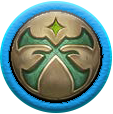 Corpsefolk
Corpsefolk
Corpsefolk are people who died and reanimated as corporeal, intelligent undead, with the same general appearance and personality they had in life, though usually with sickly pale skin, rotting parts, exposed bone, or other signs of putrescence.
Corpsefolk is the generic term for self-determined undead who return as intelligent beings to continue their existence. There are a few methods of embracing undeath, but most corpsefolk have returned through an esoteric magical ritual closely guarded by practitioners of the Song of Silence. Many elebrians chose this path when the atmosphere of their home world Eox was destroyed in a planetary cataclysm thousands of years ago, but that was only a fraction of their overall population. Corpsefolk are sometimes created by accident when necromancers attempting to create mindless minions lose control of their thrall. The largest population of corpsefolk in the galaxy can be found on Eox, where they make up the biggest population demographic on the planet, coexisting alongside other types of intelligent undead such as ghouls and ghosts as well as hordes of mindless undead.
If you want to play a character who has died and returned as an undead creature, but still retains echoes of their past life, you should consider playing a corpsefolk.
You Might…
- Despise your fate and seek to find ways to reconcile your beliefs with your current state of existence.
- Revel in being a member of the unliving, constantly bringing it up during adventures when in mixed company.
- Work toward slow-burning schemes that only you have the longevity and patience to orchestrate.
Others Probably…
- Worry that you plan to turn them into undead creatures, or eat them.
- Pity you for not being able to taste food or feel the warmth of sunlight on your flesh ever again.
- Wonder if you chose to become undead or had this state forced upon you against your will.
Physical Description
Generally speaking, corpsefolk with unblemished skin, an intact body, and no obvious signs of trauma or decay most likely performed or received the rites of return at the exact moment of their deaths, which is the ideal time for the transition as taught by the Song of Silence. Pristine corpsefolk might be ancient Eoxians who survived the death of their planet by hiding in bunkers, or newly deceased mortals who paid handsomely for the opportunity to return to unlife.
Corpsefolk with gruesome appearances were usually raised by someone else after suffering a brutal, unplanned death or a period of decomposition. Some corpsefolk defy this expectation by making the aesthetic choice to encourage skin rot or mutilate their resilient bodies into a horror show to shock the living.
Society
On the so-called grave world, corpsefolk find professional success in one of Eox's many industries, or as paid retainers working directly for the ruling bone sages. Corpsefolk often get along well with other intelligent undead such as ghouls and ghosts, who dwell alongside them on Eox. They also tend to fit in well with borai, who share the unique experience of surviving their death.
When first raised, a corpsefolk is likely to cling to the patterns familiar to them in life. Most corpsefolk cohabitate with small families or enclaves of friends. Many carry on their typical routines and hobbies. Crafters master their trades, while artists and performers chase transcendence. Some very old corpsefolk withdraw from society to pursue niche goals, spending nearly all their time sequestered in tomblike residences. Others still relish time spent with the living and seek jobs in Pact Port where they have more opportunities to interact with people that remind them of the lives they once lived.
Though Pact laws treat the murder of intelligent undead the same as living creatures, some extremists loathe all undead and can't separate everyday unliving people from the supremacist Corpse Fleet or defiling priests of Urgathoa. Many living people distrust corpsefolk, pointing to Eox's unpleasant history and twisted game shows as reasons to always be suspicious of denizens of the grave world. Like most intelligent undead, corpsefolk hide out in insular communities on Eox or risk being destroyed when they venture too far from safety. Adventuring undead usually stick together and might even disguise themselves as living creatures with the help of trustworthy allies.
Beliefs
A corpsefolk who dies as a result of betrayal or violence might prioritize vengeance against whoever was responsible for their painful and traumatic demise. Some corpsefolk were transformed against their will and spend their undeath trying to reverse their accursed state, while others desperately seek revenge against the one who caused their death, or their unlife.
Worshippers of gods like Pharasma and Sarenrae might question their faith and suddenly switch to another belief system that condones undeath after being raised. Others might stubbornly cling to their faith in hopes of being cleansed or redeemed. Some corpsefolk are practitioners of the Song of Silence, even after failing to fully transform into necrovites before dying of unplanned causes.
Rarely, corpsefolk might be followers of Urgathoa, the god of undeath and pestilence. The Pallid Princess encourages her followers to keep enjoying mortal pleasures in undeath, attracting corpsefolk yearning for the comfort of life to her faith. Corpsefolk are just as likely as the living to follow any particular philosophy or worship any god, except Pharasma, who views their existence as unnatural.
Popular Edicts die better than you lived, seek knowledge or power, live forever
Popular Anathema rest in peace